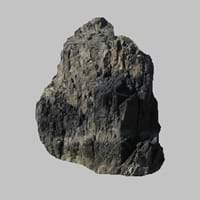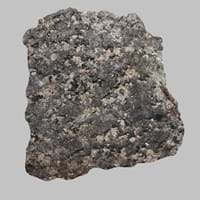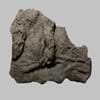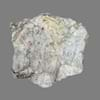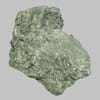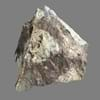Definition
Metapelite is an old and currently not widely used field geological term for a clay rich fine-grained clastic sediment or sedimentary rock, i.e. mud or a mudstone
Nephelinite is a fine-grained or aphanitic igneous rock made up almost entirely of nepheline and clinopyroxene (variety augite).
Discoverer
Unknown
Unknown
Etymology
From Pelos or clay in Greek
from French néphéline, from Greek nephelē
Class
Metamorphic Rocks
Igneous Rocks
Sub-Class
Durable Rock, Medium Hardness Rock
Durable Rock, Hard Rock
Group
Not Applicable
Plutonic
Other Categories
Coarse Grained Rock, Fine Grained Rock, Medium Grained Rock, Opaque Rock
Fine Grained Rock, Opaque Rock
Texture
Foliated
Aphanitic
Color
Dark Greenish - Grey, Green, Light Green, Light Greenish Grey
Black, Brown, Colourless, Green, Grey, White
Durability
Durable
Durable
Scratch Resistant
Yes
Yes
Appearance
Banded
Skeletal
Interior Uses
Decorative Aggregates, Interior Decoration
Decorative Aggregates, Homes, Interior Decoration
Exterior Uses
As Building Stone, As Facing Stone
As Building Stone, As Facing Stone, Garden Decoration, Office Buildings, Paving Stone
Other Architectural Uses
Curbing
Curbing
Construction Industry
Cement Manufacture, Construction Aggregate, for Road Aggregate
As Dimension Stone, Cement Manufacture, Construction Aggregate, for Road Aggregate
Medical Industry
Not Yet Used
Not Yet Used
Antiquity Uses
Artifacts
Artifacts, Monuments, Sculpture, Small Figurines
Commercial Uses
Commemorative Tablets, Creating Artwork
Creating Artwork, Soil Conditioner, Source of Magnesia (MgO)
Types
Not Available
Peralkaline Nephelinite
Features
Easily splits into thin plates, It is One of the Oldest, Strongest and Hardest Rock
Host Rock for Lead
Archaeological Significance
Monuments
Not Yet Used
Used
Famous Monuments
Not Applicable
Data Not Available
Sculpture
Not Yet Used
Used
Famous Sculptures
Not Applicable
Data Not Available
Pictographs
Used
Not Used
Petroglyphs
Used
Not Used
Figurines
Not Yet Used
Used
Formation
Due to change in environmental conditions, rocks are heated and pressurized deep inside the Earth's surface. Metapelite is formed from the extreme heat caused by magma or by the intense collisions and friction of tectonic plates.
Nephelinite is a fine-grained, hard rock which is a type of metasomatite, essentially altered basalt. It forms with or without crystallization, either below the surface as intrusive rocks or on the surface as extrusive rocks.
Mineral Content
Albite, Chlorite, Quartz
Clinopyroxene, Nepheline, Plagioclase
Compound Content
Aluminium Oxide, CaO, MgO
Ca, CaO, Carbon, Cl, MgO
Types of Metamorphism
Not Applicable
Contact Metamorphism
Types of Weathering
Biological Weathering, Chemical Weathering, Mechanical Weathering
Biological Weathering, Chemical Weathering, Mechanical Weathering
Types of Erosion
Chemical Erosion, Coastal Erosion, Water Erosion, Wind Erosion
Chemical Erosion, Water Erosion, Wind Erosion
Grain Size
Medium to Fine Coarse Grained
Fine Grained
Porosity
Highly Porous
Less Porous
Luster
Earthy
Vitreous to Metallic
Compressive Strength
Not Available
Cleavage
Not Available
Imperfect
Toughness
Not Available
2.7
Specific Gravity
3.4-3.7
2.4-2.9
Transparency
Opaque
Opaque
Density
0-300 g/cm3
2.5-3 g/cm3
Resistance
Heat Resistant, Impact Resistant, Pressure Resistant
Heat Resistant
Deposits in Eastern Continents
Africa
Western Africa
Rwanda, Tanzania
Europe
United Kingdom
Not Yet Found
Others
Not Yet Found
Hawaii Islands
Deposits in Western Continents
North America
Not Available
Canada, USA
South America
Brazil, Colombia, Ecuador
Colombia
Deposits in Oceania Continent
Australia
Central Australia, Western Australia
Not Yet Found
All about Metapelite and Nephelinite Properties
Know all about Metapelite and Nephelinite properties here. All properties of rocks are important as they define the type of rock and its application. Metapelite belongs to Metamorphic Rocks while Nephelinite belongs to Igneous Rocks.Texture of Metapelite is Foliated whereas that of Nephelinite is Aphanitic. Metapelite appears Banded and Nephelinite appears Skeletal. The luster of Metapelite is earthy while that of Nephelinite is vitreous to metallic. Metapelite is available in dark greenish - grey, green, light green, light greenish grey colors whereas Nephelinite is available in black, brown, colourless, green, grey, white colors. The commercial uses of Metapelite are commemorative tablets, creating artwork and that of Nephelinite are creating artwork, soil conditioner, source of magnesia (mgo).
